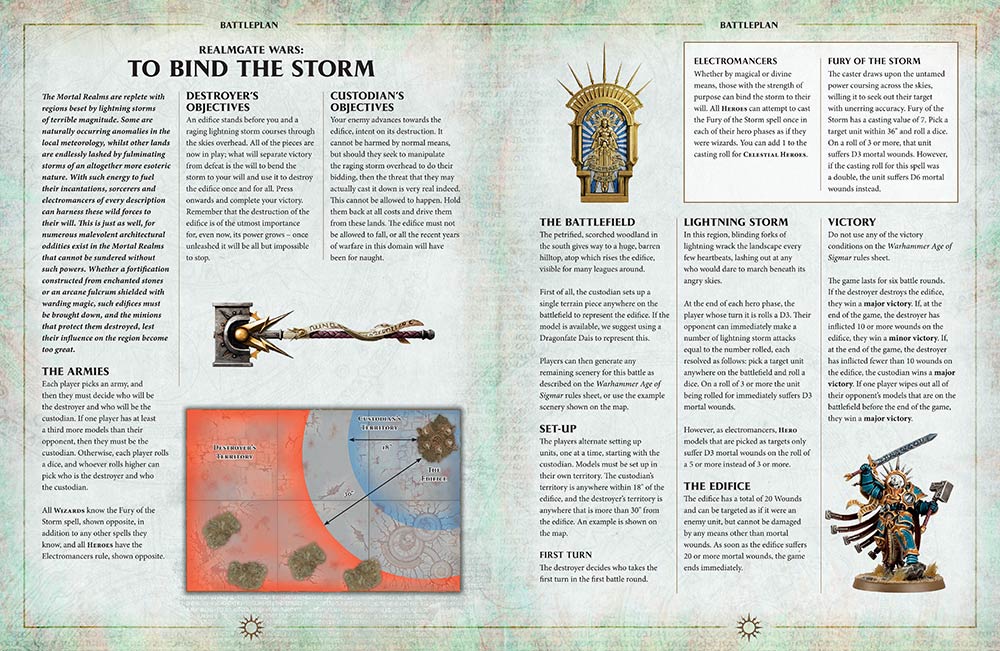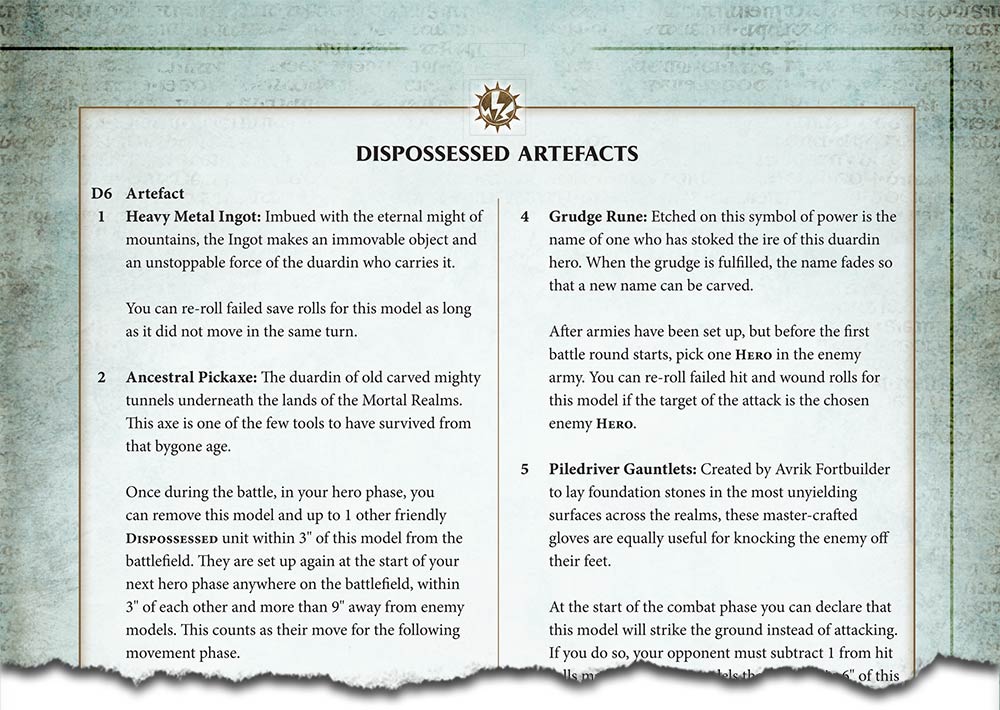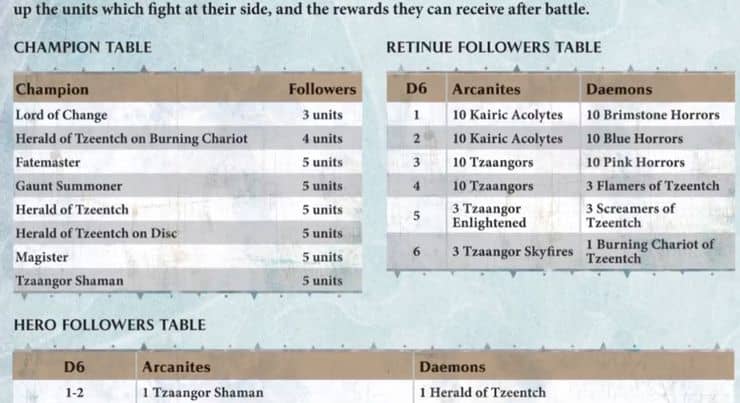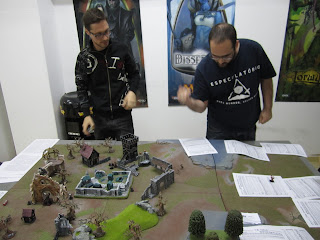This is a post a long time coming, and I've been doing my research the past months making sure I got the full scope. And tried my hands at a few games.
This is for newcomers to Age of Sigmar, current players, naysayers and even those who aren't interest in this edition of the game. There are ideas here that are very valuable and relevant, and many games could benefit from it.
This is for newcomers to Age of Sigmar, current players, naysayers and even those who aren't interest in this edition of the game. There are ideas here that are very valuable and relevant, and many games could benefit from it.
- For those still waiting for "The Enemy Within" Mordheim scenarios, I'm still editing them! Evidence:
Age of Sigmar has currently LOTS of easy-to-fit, modular rules that are filling up all the narrative needs you can have. They have slowly been building up since last year.
I'm surprised at how I myself am so satisfied.
I'm surprised at how I myself am so satisfied.
For the uninitiated in Age of Sigmar (AoS), one of the biggest perceived flaws of the system was a lack of larger game structure and unit customization, especially in terms of magic items and certain upgrades, with the biggest offenders being Hero models (which had become painfully generic). This led to a huge fear that AoS would not cater to narrative-led games but more to casual light play.
Then things started to change, massively, especially with The General's Handbooks. But I will go by parts.
BATTLEPLANS (aka scenarios)
The earliest change you could see, even in the first releases, were Battleplans, or scenarios. In AoS, many of them were released in the first campaign books, and these were very diverse in their objective, and already set out the blueprint for narrative missions.From the onset, they were as rich or richer than scenarios you would find in the old 6th ed Generals Compendium or the narrative scenarios in the final section of the 8th ed Core Rulebook. With the first Generals Handbook (2016), most universal narrative scenarios were covered: flanking attacks, defensive blockades, King of the Hill, last stands, etc. They even have a strategy matrix scenario, where both players' pre-game strategy decisions affect the game setup.
Being released as part of the game's core functionality, instead of "those other scenarios that look funky", went a long way to normalize their use.
TIME OF WAR
These are modular special rules, that represent different environments, or battle set ups: imagine battles supported by divine magic, or access to new spells drawn from the local place. For example, all wizards when in the Realm of Fire gain access to the Fireball spell.The rules are short, contained, and easy to paste onto any battleplan. And are perfect to layer onto any game to represent fighting in different terrains (or planes of existence, as we now have in AoS).
But (and this is the best part), in a very sneaky way, they have introduced RPG-like item upgrades into Age of Sigmar, to develop your army! :O If a player wins a Major Victory in a battle, they get to collect a Triumph from that region's Time of War rules. These take the form of small magical items or magical blessings, such as the return of the Ruby Ring of Ruin or the Acorn of Ages, or a Wizard gaining a Tome of Fire which grants them the use of the Fireball spell outside the Realm of Fire.
As per the rules Triumphs only apply to the next battle, but within any gaming group you can house-rule it that Triumphs (or some of them) are permanent.
ALLEGIANCE ABILITIES
This was one of the biggest splashes coming out of the Generals' Handbooks, and what really started to introduce customization back into the game.- Flavorful Abilities
They give specific battle traits rules to armies from specific grand alliances (Order, Chaos, Death and Destruction) that really evoke the narrative spirit of their models. They give command traits to your general, from which there are a few choices, and help to define their powers and personality. Finally, you can give Heroes magic items (though in a much more limited manner than previous editions) which bring back many favorites.
While having less options and less customizability than previous editions, the fact that points are not involved, and you just pick an option from each list, it makes army-building less time consuming and avoids number-crunching.
With the Generals Handbook 2017 most allegiances (like Followers of Tzeench, Ghostly Undead, or Duardin Fyreslayers) also got their own set of abilities and further expands the flavour of that sub-faction (like Wood Aelf Wanderers being adept at mist-walking and shooting on the run).
-Magic Lores
Finally, and this has only been explored in a couple sub-factions, we are starting to see specific Magic Lores being re-introduced. Sylvaneth, Bonesplittaz and Followers of Tzeench wizards can each get one single spell from the Lore list, on top of those they know, as long as their army is aligned to that specific allegiance. They still cannot cast more spells per round than before, so balance is preserved.
And just like that, a lot of flavour gets reintroduced back into the game almost seamlessly.
OPEN WAR CARDS
 This one is probably one of the best ideas ever in Warhammer, and previous editions would have benefited massively from this gaming aid.
This one is probably one of the best ideas ever in Warhammer, and previous editions would have benefited massively from this gaming aid.It is a scenario and special rules generator in the form of a set of cards, with a pile for Deployment Zones, Objectives and Scenario Special Rules. It also has a pile for Ruses (special tricks players can play on each other during battle) and Sudden Death (special victory conditions for armies that are significantly smaller.
 And just like that, you can generate an interesting random scenario, with diverse objectives from capturing objectives to killing a messenger.
And just like that, you can generate an interesting random scenario, with diverse objectives from capturing objectives to killing a messenger.Further, you can combine specific cards from each pile beforehand to build custom scenarios at your pleasure. And also, Ruse cards make a great bonus resource for use in narrative campaigns.
CAMPAIGNS
We had been waiting for these for quite some time. Boy, they really spent time streamlining these. They are very easy to implement, but they really REALLY shine when you connect them to the other narrative rules options, more than any other Warhammer edition before.
-Army progression campaigns
The first form these take, and the most straightforward, is a Time of War rule called Regiments of Renown (you might remember this name ;) ) that allows each unit to gain a 'veteran' ability after each game. This is great for league and ladder campaigns in a gaming group, especially when players still have small armies.
The next big breakthrough was Path to Glory, which was so popular that it got released and expanded in its own book. In this format, you pick from one of many allegiances within each Grand Alliance (like Khorne Bloodwarriors or Sylvaneth) and choose a champion and a few units of followers. After each battle and accruing glory points, the army is upgraded with either more followers or champion/unit 'veteran' abilities which all build on the army's flavour (like undead units recovering more models, or Aelf champions improving their command abilities). The follower tables balance the strength of the added models by how many you get to add in each upgrade.
This is the next easiest step to implement in a gaming group, and pick either a glory points threshold to win or come up with a special battle royale final scenario or somesuch.
Of course, players can use either of these progression rules (or both!) bolted on to a larger map-based campaigns.
The first form these take, and the most straightforward, is a Time of War rule called Regiments of Renown (you might remember this name ;) ) that allows each unit to gain a 'veteran' ability after each game. This is great for league and ladder campaigns in a gaming group, especially when players still have small armies.
The next big breakthrough was Path to Glory, which was so popular that it got released and expanded in its own book. In this format, you pick from one of many allegiances within each Grand Alliance (like Khorne Bloodwarriors or Sylvaneth) and choose a champion and a few units of followers. After each battle and accruing glory points, the army is upgraded with either more followers or champion/unit 'veteran' abilities which all build on the army's flavour (like undead units recovering more models, or Aelf champions improving their command abilities). The follower tables balance the strength of the added models by how many you get to add in each upgrade.
Of course, players can use either of these progression rules (or both!) bolted on to a larger map-based campaigns.
-Map-based
The Generals Handbooks introduced a few simple setups for map campaigns, which are pretty easy to mock up in gaming groups.
But things really took off with the release of Firestorm. This is a boxed game, and just feels like a boardgame: a map, cards for resources and point tracking, and reusable sticker/tokens to track army position and garrisons built.
It is designed to be very freeform, where players can challenge for control of any map section anywhere, but as they build garrisons they are granted more troops when fighting nearby. And rivers restrict this, so geography still plays a role. Also, the scale of the armies fielded is also freeform, and players can agree on any value (of matched play points or even skirmish-level renown points) to fight their battles, and even vary it from battle to battle.
As players fight battles, they gain Glory and Build points. The first count towards final victory, while the latter are used to build garrisons and upgrade their deck which determines how powerful their overall force in the campaign is. It is from this deck that the amount of points they can field is decided.
Each map region has its own Time of War rules to ensure different areas remain interesting and distinct to fight in.
The story in Firestorm is actually one of its coolest selling points, which strangely is not being used in promotional material. The reason armies are fighting there is to gain control of the Prismatikon, an ancient arcane array (from a fallen civilization, of course) that harnesses the energy of a captive elemental fire-entity into a beam weapon. Together with the arcane computer of the Infinity Gears, this magical weapon of mass destruction can be fired through portals across the Realms to level entire cities. Hot dang!
The Generals Handbooks introduced a few simple setups for map campaigns, which are pretty easy to mock up in gaming groups.
But things really took off with the release of Firestorm. This is a boxed game, and just feels like a boardgame: a map, cards for resources and point tracking, and reusable sticker/tokens to track army position and garrisons built.
It is designed to be very freeform, where players can challenge for control of any map section anywhere, but as they build garrisons they are granted more troops when fighting nearby. And rivers restrict this, so geography still plays a role. Also, the scale of the armies fielded is also freeform, and players can agree on any value (of matched play points or even skirmish-level renown points) to fight their battles, and even vary it from battle to battle.
As players fight battles, they gain Glory and Build points. The first count towards final victory, while the latter are used to build garrisons and upgrade their deck which determines how powerful their overall force in the campaign is. It is from this deck that the amount of points they can field is decided.
Each map region has its own Time of War rules to ensure different areas remain interesting and distinct to fight in.
The story in Firestorm is actually one of its coolest selling points, which strangely is not being used in promotional material. The reason armies are fighting there is to gain control of the Prismatikon, an ancient arcane array (from a fallen civilization, of course) that harnesses the energy of a captive elemental fire-entity into a beam weapon. Together with the arcane computer of the Infinity Gears, this magical weapon of mass destruction can be fired through portals across the Realms to level entire cities. Hot dang!
NARRATIVE GAMING EVENTS
 Finally, we get to what is probably the biggest change in Warhammer narrative gaming. People are organizing lots of Narrative Events throughout the world. They are like tournaments, but unlike player's competing with each other as gamers, players compete as allegiances and drive forward a narrative played out in flavorful scenarios. Lots of campaign and scenario special rules are being created by avid gamers and organizers out there.
Finally, we get to what is probably the biggest change in Warhammer narrative gaming. People are organizing lots of Narrative Events throughout the world. They are like tournaments, but unlike player's competing with each other as gamers, players compete as allegiances and drive forward a narrative played out in flavorful scenarios. Lots of campaign and scenario special rules are being created by avid gamers and organizers out there.You can find the latest news in the Narrative Event Organizers Network.
THE NARRATIVE SETTING ITSELF
Coming to the end of the article, I'll just describe what people who aren't familiar can expect of the Age of Sigmar world, and to understand how life in the Mortal Realms really is for the average mortal there. The setting of Age of Sigmar has often been touted as shallow and designed in a rush, but in truth I believe Games Workshop should really talk about it more, so that people understand its stories and how people see their world.
The Old World of Warhammer was destroyed. This was many millenia ago in the Age of Sigmar. People talk about it in a mythological way, and how the gods (Sigmar, Nagash, Allariele) and other powerful supernatural entities (Arkhan the Black, The Glottkin) trace their past to that place. But the origin of many of these larger-than-life characters is now shrouded in myth (only we know the truth!).
These gods helped populate the Mortal Realms: eight planes of existence each of which is dominated by a prevailing magical force (Aqshy the Realm of Fire, Chamon the Realm of Metal) which corresponds to one of the Old World's winds of magic. This was apparently how the remnants of the Old World stabilized: they are now fantastical and highly supernatural. Realmgates, mystical natural portals between the realms (or within the same realm) that can take many shapes, connect them and allow travel and trade. Warhammer is now Cosmic Fantasy, much like Planescape.

Each god took stewardship of a different realm, and helped the mortal survivors who managed to start eking out an existence in these Realms, using the realms' resources and slowly incorporating them into their culture. And multiple cultures and races (aelfs, duardin, humans) started cooperating and practicing multiple religions in the same place (including Nagashian worship!). Many cultures across the Realms evolved, and empires already rose and fell. But what really drove all the civilizations into the ground was the massive invasions of the Age of Chaos. Not the usual raids, but a concerted invasion that broke the gods' power.
Now most mortals are either enslaved, converted to Chaos or are valiantly resisting in guerilla fights and hiding out in resilient locations. This has now been several centuries of Chaos domination.
This is where the Age of Sigmar starts, with Sigmar's warriors, the Stormcast Eternals, returning to bring freedom to the Realms. They even find settlements of survivors who have never stopped believing in Sigmar after all these centuries and prayed to him for salvation.
And the Stormcast themselves are former mortal heroes who have been reincarnated as Azyr-empowered superhumans, and can be reincarnated again and again... but at a cost to their souls and memories. I want to see how long will it take for some Stormcast to start rebelling against Sigmar's decision in enlisting them and forcing them to fight forever.
At this point in the story several regions have been liberated and small cities have sprung up from the survivors and migrants from Sigmar's realm... This also works well as a "points of light" system for RPGs, making it easy for "heroes" to adventure out of the safety of the city to the wilderness and fight monsters.
While the tone of the Age of Sigmar is heroic and its Stormcast always shown in a valiant light, reading between the lines you can see how dark seeds of doubt are being sprinkled, that can be used in future stories... The people of the cities who migrated from Azyr behave as if they are better than their "uncivilized" neighbours from the liberated realms. People are wary of the Stormcast, these superhuman war-obssessed angels who arrive in thunderbolts from the sky, and who might quickly go paranoid if they suspect Chaos corruption. In the larger plan of Sigmar, risks cannot be taken.
So things are looking up on the narrative side, much to my surprise. It's just that Games Workshop could be promoting it more, other than the books. They are starting to, here.
All the details that 'sell' the narrative are under the surface.
And that's it. For now.
I am very surprised that, after such an absence of investment in narrative gaming from GW for several years, they have come back so strong and effective.
And I have learned a lot in terms of game rules structure, and deliver simple, modular but effective rules.
Roll high and prosper!
I am very surprised that, after such an absence of investment in narrative gaming from GW for several years, they have come back so strong and effective.
And I have learned a lot in terms of game rules structure, and deliver simple, modular but effective rules.
Roll high and prosper!

























































